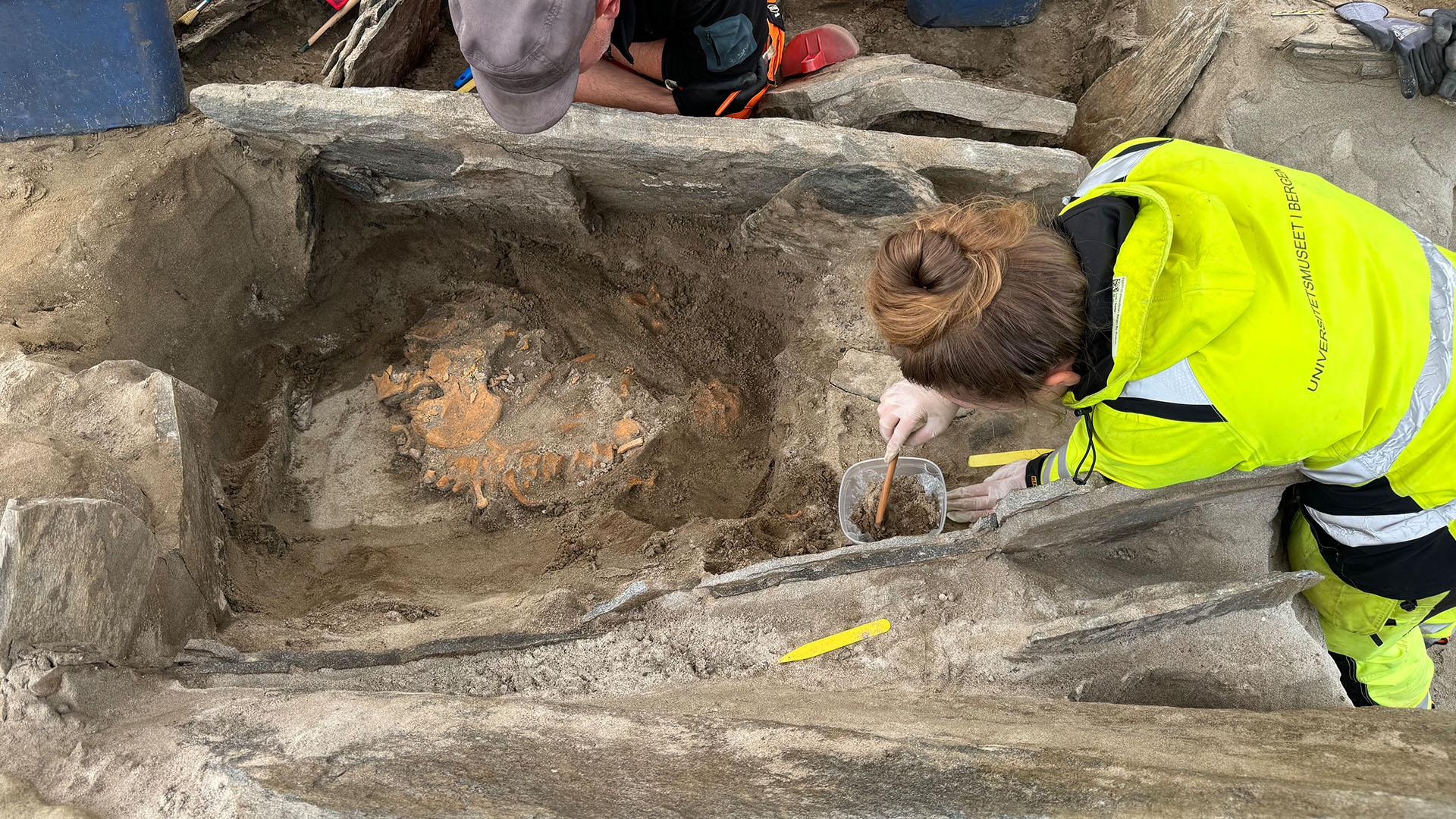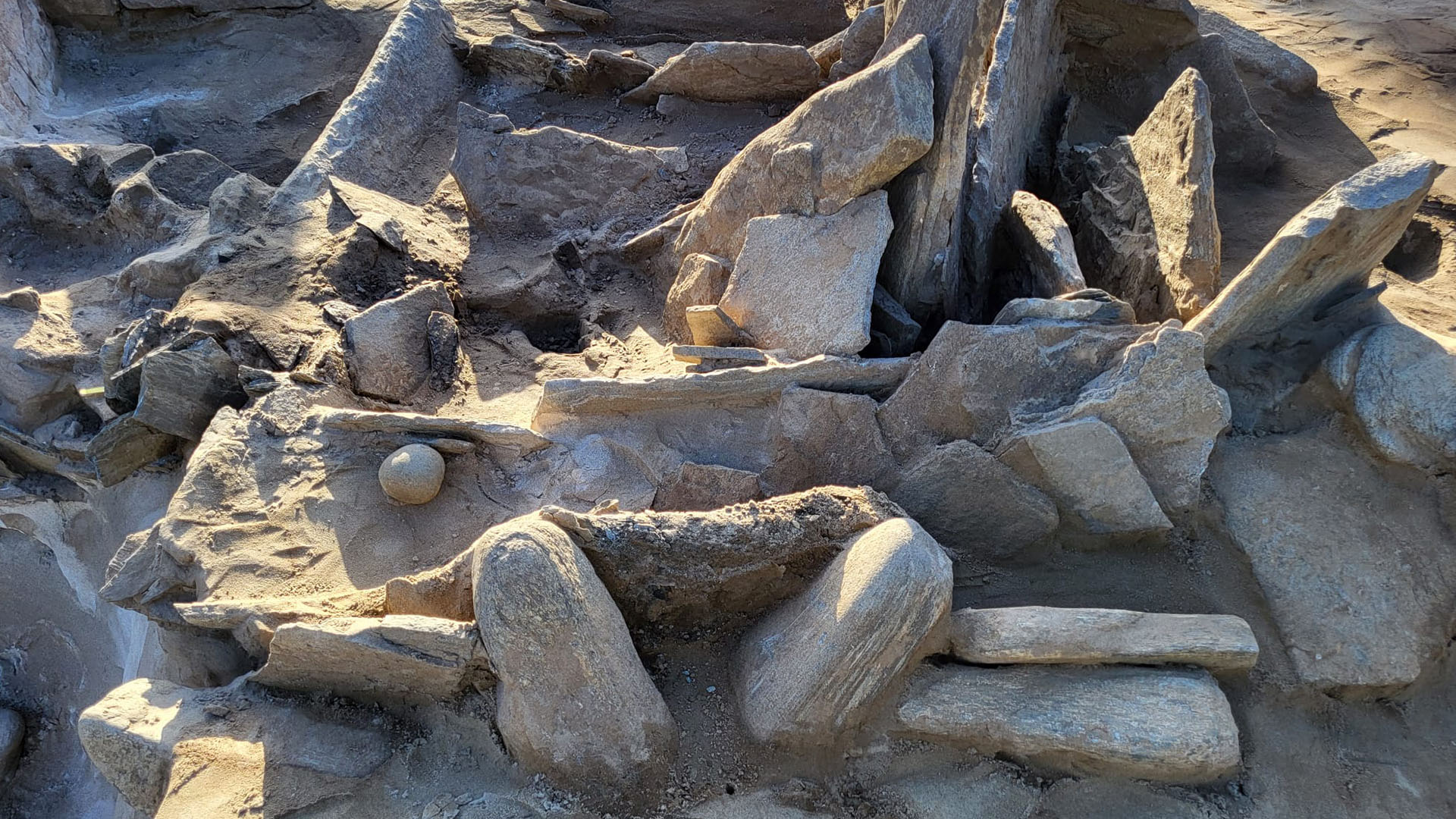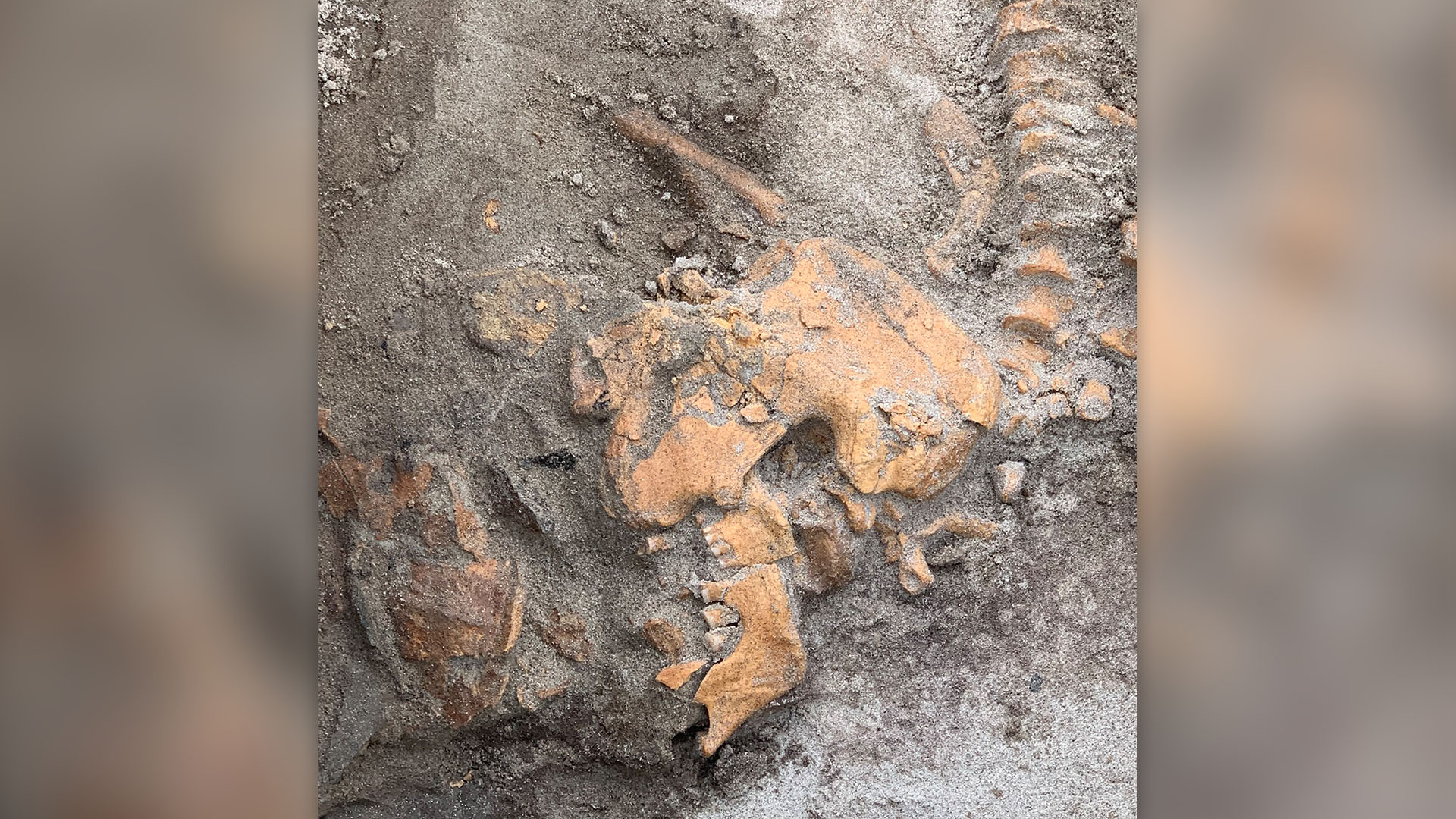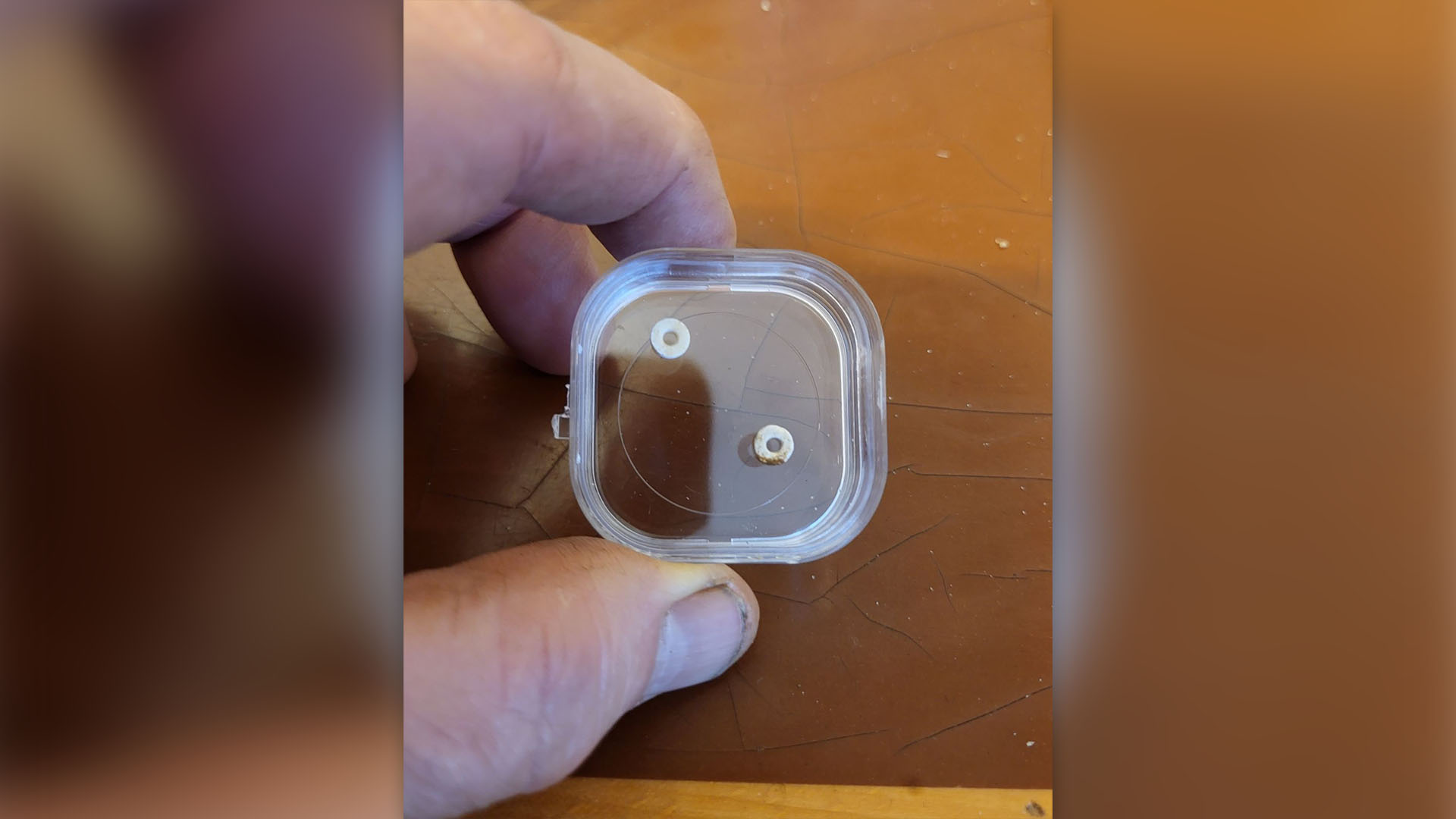4,000-year-old tomb discovered in Norway may contain region's 1st farmers
Archaeologists in Norway have discovered a stone-lined tomb from the late Neolithic that holds the remains of at least five people.

A 4,000-year-old stone-lined tomb discovered during construction work in Norway may provide new clues about the first farmers who settled the region, archaeologists say.
Since April, researchers from the University Museum of Bergen have been excavating at the site of a new hotel in Selje, on the North Sea coast of southwestern Norway. So far, they have found traces of prehistoric dwellings and trash heaps full of animal bones, along with a stone tool called a blade sickle and tiny shell beads. But the most unique find is a large stone-lined tomb that held the skeletons of at least five people.
The burial, which archaeologists call a cist tomb, has been carbon dated to between 2140 and 2000 B.C., or the end of the Neolithic period. Measuring about 10 feet by 5 feet (3 meters by 1.5 m) and nearly 3 feet (1 m) tall, the tomb has two chambers with evidence of burials, including the remains of an elderly man with arthritis, a 2-year-old toddler and a young woman. Additional clustered bones suggest two other individuals' remains had been moved aside to bury new people.
While humans invented agriculture around 12,000 years ago in the Middle East, the technique was slow to reach Norway, where people spent millennia living a more nomadic hunting and fishing lifestyle. Two big areas of interest in Norwegian archaeology are how the idea of agriculture took hold and who the earliest farmers were. The Late Neolithic date of the burial along with the presence of a blade sickle, which may have been used to harvest grain, provides strong evidence that Selje was settled by some of the first farmers in western Norway.


"The Selje cist, with its amount of bones, gives [us] a unique opportunity to look into the first groups of individuals who became farmers, as it is "the first of its kind on the west coast of Norway," Yvonne Dahl, a member of the University of Bergen archaeology team, told Live Science in an email.
During the Late Neolithic period, people in southwestern Norway typically buried their dead in rock shelters. But in the eastern part of Norway, where people were already practicing agriculture, cist graves like the one at Selje are much more common. Archaeologists have long assumed that the stone cist funeral tradition originated on the Jutland peninsula of Denmark before farming communities brought it to Sweden and Norway.
Get the world’s most fascinating discoveries delivered straight to your inbox.


Planned DNA testing of the Selje skeletons may be able to confirm whether these people migrated to the west with farming knowledge gained from the east, or whether they are a local group of people who chose a farming life. The future tests should reveal whether, as expected, the people in the tomb are biologically related to one another.
Even though Selje is located on the coast, where the sea in winter makes traveling nearly impossible, "the site is clearly a meeting point for people," Dahl said. "Widespread exchange of both people, ideas, and goods must have been the case during those many thousands of years."

Kristina Killgrove is a staff writer at Live Science with a focus on archaeology and paleoanthropology news. Her articles have also appeared in venues such as Forbes, Smithsonian, and Mental Floss. Kristina holds a Ph.D. in biological anthropology and an M.A. in classical archaeology from the University of North Carolina, as well as a B.A. in Latin from the University of Virginia, and she was formerly a university professor and researcher. She has received awards from the Society for American Archaeology and the American Anthropological Association for her science writing.
 Live Science Plus
Live Science Plus






